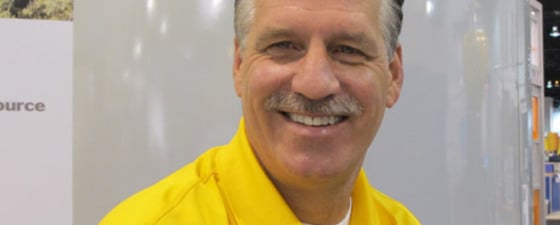“That is what actually happened. I met this guy in a bar in my home town of Jackson, Missouri. He was working on seismic boats and told me what a great life it was,” Jim explains. “I’d finished college and was wondering what to do with my life. He said ‘we’re hiring’ – and a week later I found myself on a boat in Nantucket, Massachusetts, going to sea with nothing except the clothes I stood up in, as my bags had got lost en route!”
Despite this somewhat inauspicious beginning, Jim took to the life of a ‘doodlebugger’ (for the uninitiated, a slang term for a member of a seismic crew) and, nearly 30 years later, he is still in the business. Nowadays, however, he is more likely to be organising seismic surveys in his position as VP Operations for Fairfield Nodal, rather than working on the back deck of a boat.
“I joined Digicon in 1981 and worked all over the world – North Sea, Gulf of Mexico and West Africa from Senegal to Gabon. As a young man working in these countries it was very exciting. For example, on one occasion we were in Monrovia, Liberia, during a dictator assassination and were confined to our hotel for days.
In 1989 the company asked me to move to Singapore as Operations Manager, where I found myself managing three 2D streamer crews. For a while we controlled the 2D market there, and then began to move into 3D; in fact, we shot the first ever 3D survey in the area for Digicon.” Singapore suited Jim. “I loved it there,” he says. “I arrived with two suitcases and left four years later with two 40 foot containers – and two kids!”
Directing Operations
Since then he has remained in the Operations field, mostly back in Houston, where he was managing the US survey teams with Digicon, who had been taken over by Veritas in 1996. “Although I was very happy with Veritas, Fairfield made me an offer I couldn’t refuse, so I moved to become VP Operations soon after the takeover.
So what makes a good operations manager?
“It’s important to know the crews and stay in touch with them all the time, and not to be aloof,” explains Jim. “They know that I have worked offshore and understand the issues, and I believe that helps. It’s one thing to know what a piece of equipment does, and quite another to know how to handle it. They understand that when I ask them to do something, I realise the processes and difficulties involved. And when they come back to me with comments or problems, I know where they are coming from. As an Operations Manager it is important to keep flexible at all times, and be ready with a new plan if circumstances change.”
“I also think that I have been fortunate with the managers and companies I have worked with, which are small enough to react rapidly to market forces and changes,” he adds. “For example, in the downturn in the industry in 1998, we had to drop from running three crews to running no crews, and survived on selling spec data for several months. But when things started to improve we were in a position to get up and running fast, with new ideas and techniques.”
Challenging times
These new ideas included undertaking 4C (4 component) surveys, harnessing the S (shear) wave part of a seismic echo, as well as the P (pressure) component, which is now the backbone of Fairfield Nodal’s operations. “This technique is ideal for some of the more difficult areas the industry is working in nowadays, particularly the gas provinces and areas where salt is a major feature – but these are the main and also the most exciting plays at the moment,” Jim says. “It has proved particularly successful in the North Sea and the Gulf of Mexico, but the operations group also has supporting teams in Saudi Arabia, where we are training crews in the use of our Z700 shallow water technologies.”
“With Fairfield Nodal data acquisition we only deal in marine operations – but by putting receiving nodes onto the seabed, rather than towing streamers, it is as though we are doing land seismic in the water.”
“These sorts of techniques are very important for the future of the oil and gas industry,” Jim continues. “All the easy stuff has been found, all the major Gulf of Mexico fields; now we must look deeper and harder. It’s a challenging time for the industry, and the technology must keep up with it. But there are also exciting emerging markets, like deepwater Brazil and West Africa.
Many changes
Jim hasn’t been offshore now for several years and admits that he misses the life, although he enjoys what he is doing and the contact with the crews. “I get involved in many aspects of the business, from advising on the practical design for seafloor nodes to looking at seismic survey plans. It’s all very interesting.”
Jim has seen many changes in operations since he first started working on the back deck. “We were much less aware of health and safety issues then – some would say more careless! Everything was done by hand, from stacking cables to retrieving buoys from the sea by leaning out with a grappling hook. It’s much less physical now, with many jobs done by automation and using remote controlled vehicles, so it’s a much safer environment to work in.





